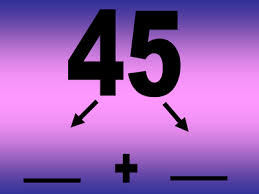Game Of Partitions
 Alice and Carla are playing a game of their own invention. To both players, a positive integer
is known. Then, the game proceeds as follows:
Alice and Carla are playing a game of their own invention. To both players, a positive integer
is known. Then, the game proceeds as follows:
-
Carla makes the first move by splitting into two (not necessarily distinct) positive integers that add up to it.
-
The next person picks one of the numbers (greater than 1) and further splits that number into two more positive integers.
-
If one of the numbers split is a 1, the player gets a point. (If both are 1, the player gets two points.)
-
The next person takes their turn by repeating steps 2 and 3 until there are only ones, meaning there are no longer any numbers that can be split.
If both Alice and Carla play optimally, given a positive integer it can be determined who should win the game. For how many positive integers should Carla be the winner?
Example Game:
Carla chooses the number 5 - Numbers: {5}
Carla splits 5 into 2 and 3 - Numbers: {2,3}
Alice splits the 2 into 1 and 1 and scores two points - Numbers: {1,1,3}
Carla splits the 3 into 1 and 2 and scores one point - Numbers: {1,1,1,2}
Alice splits the 2 into 1 and 1 and scores two points - Numbers: {1,1,1,1,1}
The numbers have been split into 5 ones, therefore the game ends 1-4 in favor of Alice.
The answer is 50.
This section requires Javascript.
You are seeing this because something didn't load right. We suggest you, (a) try
refreshing the page, (b) enabling javascript if it is disabled on your browser and,
finally, (c)
loading the
non-javascript version of this page
. We're sorry about the hassle.
The answer ends up being a bit simpler than you might think. The optimal solution for both players is to simply split each number n into 1 and n − 1 , starting with N and ending with 2 being split into two 1 s. After N − 1 turns the game is concludes, no matter how the game is played.
If N is even, then the number of rounds will be odd, meaning that Carla will get an extra turn. Each player gets 1 point per turn and then Carla will get an extra 2 points for the last split, meaning that the score will end 2 N + 2 to 2 N in favor of Carla.
If N is odd, then the number of rounds will be even, but since Alice makes the last move, she will get an extra point for making the last split. This gives us a final score of 2 N − 1 to 2 N + 1 in favor of Alice.
There are 5 0 even integers less than or equal to 100, therefore Carla has 5 0 numbers she can choose from to win the game.